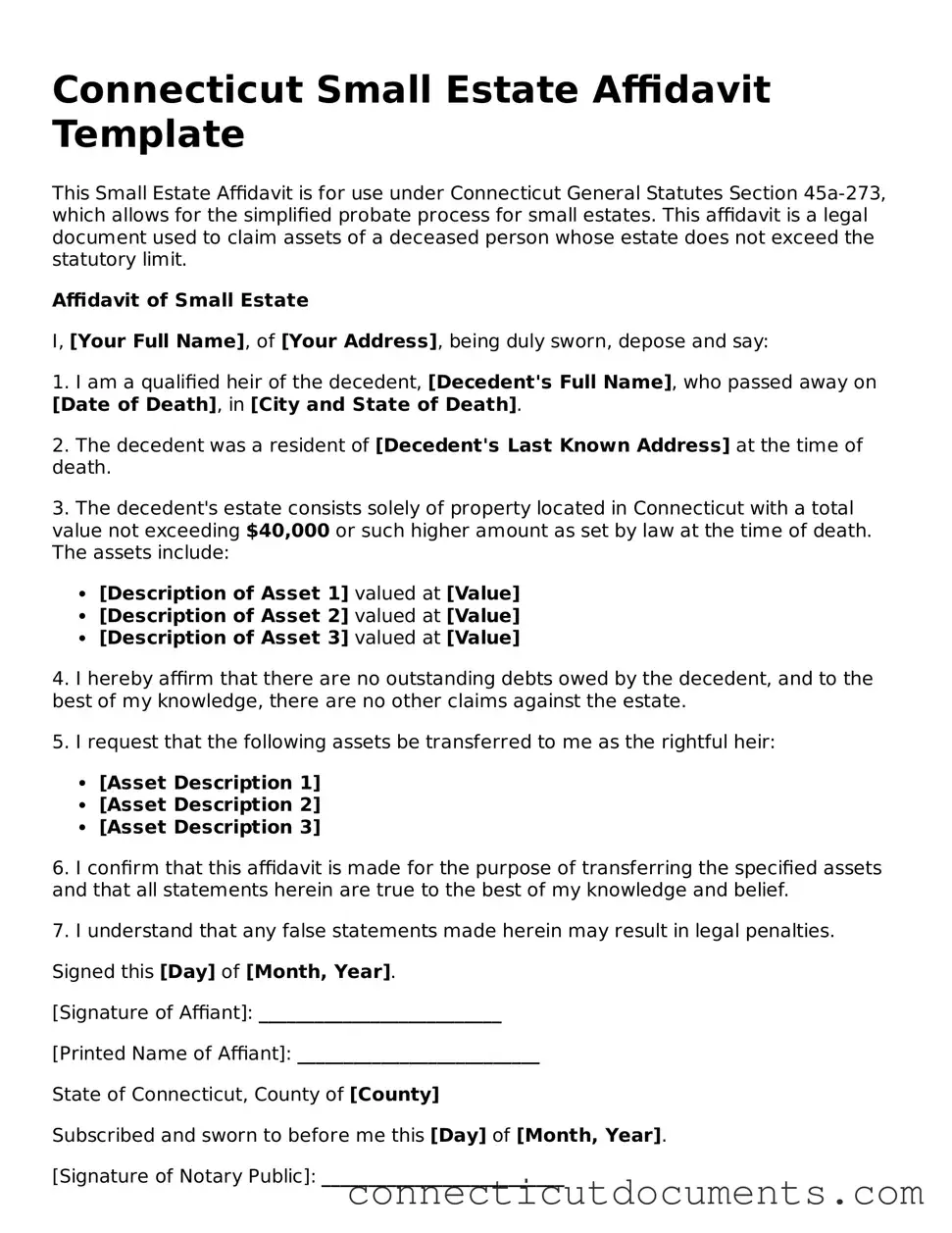What is the Connecticut Small Estate Affidavit?
The Connecticut Small Estate Affidavit is a legal document that allows individuals to claim the assets of a deceased person without going through the full probate process. This form is typically used when the total value of the estate is below a certain threshold, making it a simpler and quicker option for settling an estate.
Who can use the Small Estate Affidavit?
Generally, any individual who is entitled to inherit from the deceased can use the Small Estate Affidavit. This includes heirs like spouses, children, or other relatives. However, the estate must meet the specific value limits set by Connecticut law to qualify for this process.
What is the value limit for using the Small Estate Affidavit?
As of now, the value limit for a small estate in Connecticut is $40,000. If the total value of the estate is less than this amount, the Small Estate Affidavit can be used. It's important to check for any updates to this limit, as it may change over time.
What assets can be claimed using the Small Estate Affidavit?
Assets that can be claimed include bank accounts, personal property, and other items owned by the deceased. However, real estate typically cannot be transferred using this affidavit. For real estate, a different legal process must be followed.
How do I complete the Small Estate Affidavit?
To complete the Small Estate Affidavit, you will need to provide information about the deceased, the heirs, and the assets of the estate. The form must be signed under oath, which means you are affirming that the information provided is true. It’s advisable to have a notary public witness your signature.
Do I need to file the Small Estate Affidavit with the court?
No, the Small Estate Affidavit does not need to be filed with the court. Instead, you present it directly to the financial institutions or other entities holding the deceased’s assets. They will use the affidavit to release the assets to you.
Can creditors make claims against the estate after using the Small Estate Affidavit?
Yes, creditors can still make claims against the estate even after you have used the Small Estate Affidavit. It is wise to ensure that all debts are settled before distributing any assets to the heirs. This helps avoid potential legal issues later on.
What should I do if the estate exceeds the value limit?
If the estate exceeds the $40,000 limit, you will need to go through the regular probate process. This process is more complex and may require the assistance of a lawyer. It involves filing a petition with the probate court and following specific legal procedures to settle the estate.
